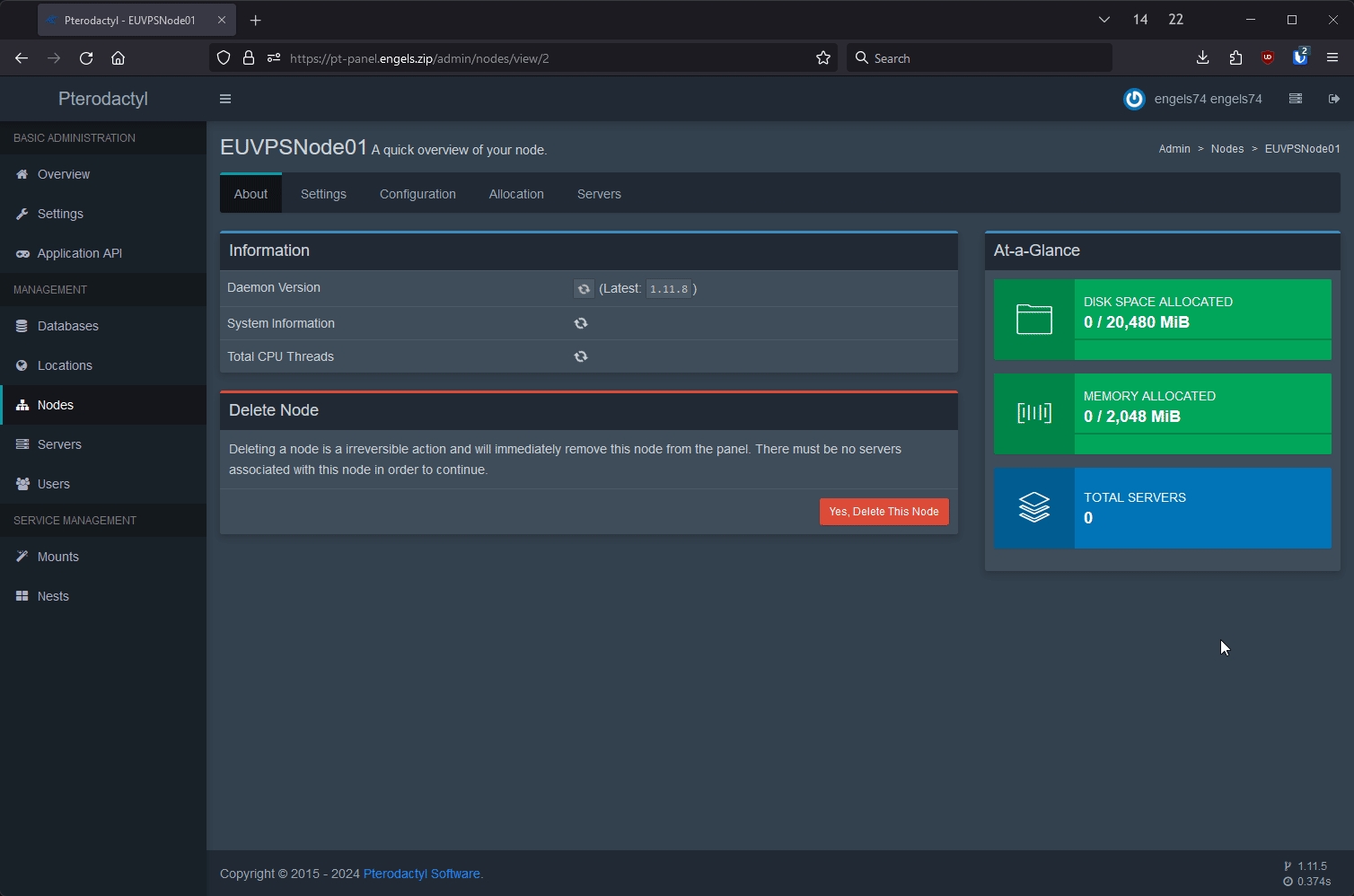04a) Creating the config.yml
For this section, we'll create a proper 'config.yml' file for our 'pt-wings' container. Fortunately, the Pterodactyl Panel does the majority of the legwork for us. We only need to make a minor change because the default ports it wants to use for game servers are usually already in use by Docker or other Docker containers.
Creating the config file
Head to the Configuration tab of your newly created Node:

This will contain your node's unique
config.ymlfile. This is required for thept-wingsto function properly and to communicate with the Panel.In my case, it looks like this:
debug: false
uuid: 4b01fefb-9143-4ffb-9882-c97db8ba88c3
token_id: ROsW3bzXVaaGjzQo
token: oifI80cY1wBwVywEHKN1Us6ljTnz4uqjRuxp9x8fAWQvtQCBNZD2RNRtAPaLMmOY
api:
host: 0.0.0.0
port: 443
ssl:
enabled: false
cert: /etc/letsencrypt/live/pt-wings.engels.zip/fullchain.pem
key: /etc/letsencrypt/live/pt-wings.engels.zip/privkey.pem
upload_limit: 100
system:
data: /var/lib/pterodactyl/volumes
sftp:
bind_port: 2022
allowed_mounts: []
remote: 'https://pt-panel.engels.zip'Do not copy this specific text example to your config.yml - it'll not work.
You need to use the text from your panel!
Copy the
config.ymlinto your text-editor of your choice.At the bottom, below the
remote:part, you need to add this:
This will cause the pt-wings to create a new network called pterodactyl_nw, which will be used by all game servers. It also uses a port range that is quite different from what Docker uses by default.
Remember to change the allowed_origins URL, to the URL of your panel!
In my case, I would enter pt-panel.engels.zip without http or https.
In my case, after I added the extra text, my
config.ymlwill look like this:
Saving the config.yml the right way
config.yml the right wayTo get this file onto the server, place it in the
/etc/pterodactyldirectory as the root user, or withsudo.To achieve this, I'll simply just use Nano and paste the text in there. Use this command:
Paste the text into the terminal, press
CTRL-Xto finish editing, thenYto confirm andENTERto save.Looks like this from a terminal point of view
Now we can continue to the next step 👍
GIF Guide

On to the next step!
Last updated